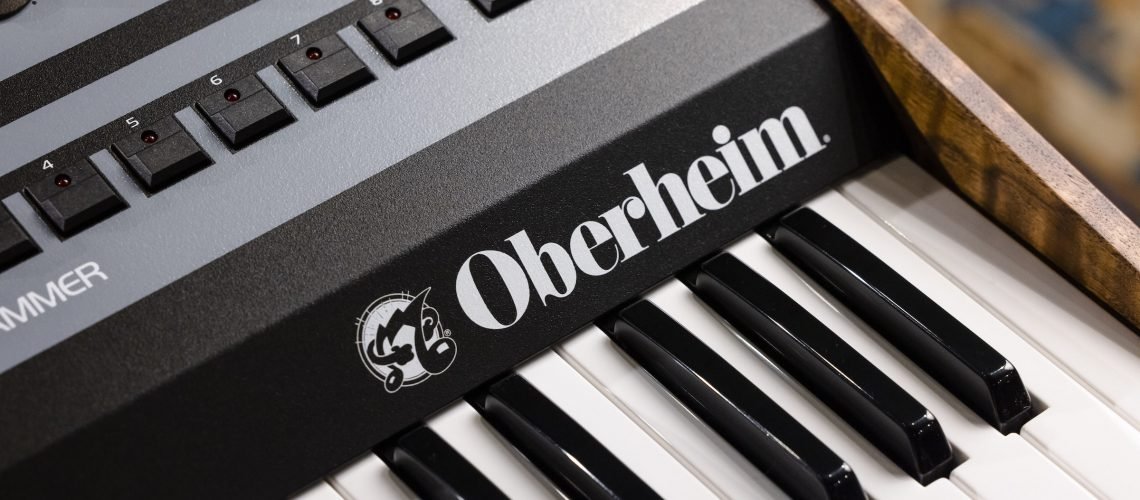The first new Oberheim instrument in 35 years is something special. So let’s get an exclusive tour of what this instrument is like to play — from one of the people who programmed some of its new sounds. And yes, we’ve got sound samples.
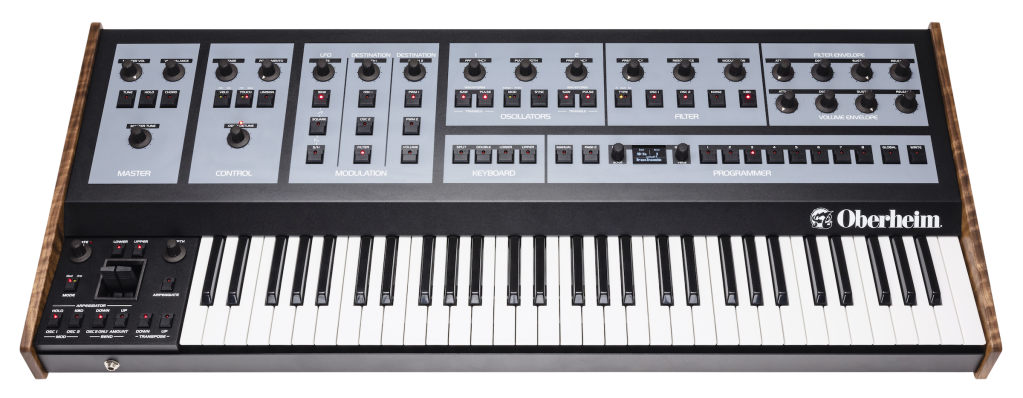
Friend-of-the-site and veteran sound designer Francis Preve joins us for another unique synth tour. I’ll let him take it away: -Ed.
More in the news:
Life with the OB-X8
After programming it for a month (and comparing it to other analog gear in my rig), I can confirm that the Oberheim OB-X8 is a truly fantastic beast with an incredibly specific sound, much like last year’s spot-on reissue of the original Prophets 5 and 10.
When I first fired it up, I was startled by how much it instantly evoked the sound of artists who relied on it for multiple hits. Sure, Van Halen’s “Jump” brass sound is a trademark of the OB series, but it’s also the sound of Prince and Jam & Lewis (aka The Minneapolis Sound), as well as a striking number of UK synthwave artists from the early 80s. The Thompson Twins, Depeche Mode, Simple Minds, along with art-wave pioneers Japan and Ultravox, all used Oberheims in crafting their early records—and it’s astonishing how much these instruments influenced the sound of vintage synthwave. Familiar sounds practically fall out of the unit with minimal effort.
And thanks to Tom Oberheim, Marcus Ryle, and Dave Smith, the sound is… huge.
There are two distinct engineering aspects that make the OB sound so recognizable: The circuits and the architecture. The sound of the circuits and Curtis chips are fairly obvious to most vintage synth fans, especially the filters, which have a sonic fingerprint unlike other synths from the same era. But those chips and overall signal flow has been tweaked and customized, to recreate the original character of its forebears. As a result, they’re thick and beefy, even in 2-pole mode, and the 4-pole OB-Xa filter is insanely warm and round, despite (or perhaps because of) its subdued resonance behavior. If you want squelchy resonance, just pick one of the other low-pass options. We’ll get to those in a bit.
While the circuits/architecture will be the main attraction for most musicians, the user experience is just as important to the OB sound, because all three synths were designed during the first decade of mainstream analog synthesis, before the entire industry essentially committed to the workflow outlined by the Roland Jupiter and Juno series (also definitive analog synths, to be clear). While I plan to write a more in-depth analysis of this era… someday… for now it simply means that users coming from software—or contemporary analog hardware—are going to grapple with a bit of a learning curve.
Here’s why:

Oscillators
The OB-X8 oscillators have a specific sound, but they’re also implemented in an unusual manner. To start, there’s no mixer section on the front panel. You can simply toggle them on/off via the filter section’s buttons, but you can’t set their levels unless you do a bit of menu diving.
This is actually super-useful in practice and the oscillator waveform selection process is equally unique. Each oscillator has two buttons for sawtooth and square/pulse. When both buttons are off, you get a smooth sounding triangle. Select sawtooth or square and you’ll hear their familiar harmonics. But select both saw and square simultaneously and you’ll hear a unique new waveform one octave higher. Why? Because the square wave is intentionally out-of-phase with the sawtooth, resulting in only even harmonics. Mathematically, this translates to another sawtooth an octave higher, but sonically it’s a bit grittier—and sounds incredible with pulse-width adjustments.
The oscillators include a few other extras that extend their usefulness and make the OB sound so identifiable. The front panel pulse-width knob controls both oscillators’ square waves simultaneously, which works well in context with their phase relationships. Hard sync has its own button, while a second button toggles between cross-modulation and/or routing the filter envelope to modulate the pitch of oscillator 2 for either hard sync sweeps or that trademark pitch “blip” in the iconic brass sounds. It’s also worth noting that these functions quickly illustrate how Richard Barbieri (of Japan and numerous progressive rock bands) was able to create some of his more unique textures.

Filters
From the panel, there are three options: OB-X, OB-Xa, and OB-Xa 4-pole. Each of these sound remarkably different. Resonance fans will dig the first two, while the 4-pole Xa offers a much richer flavor at the expense of some resonance attenuation, delivering that arena sound associated with Van Halen’s “Jump” and other 80s rock hits.
That alone would be enough for most users, but if you dig into the Page 2 settings, you’ll find the classic SEM 2-pole low-pass, high-pass, notch, and band-pass options. These aren’t state-variable (i.e. continuously sweepable) but it’s really nice that they’re all included, as they dramatically increase the X8’s versatility. In fact, one of my patches uses an LFO swept notch filter to emulate a phaser. Super fun.
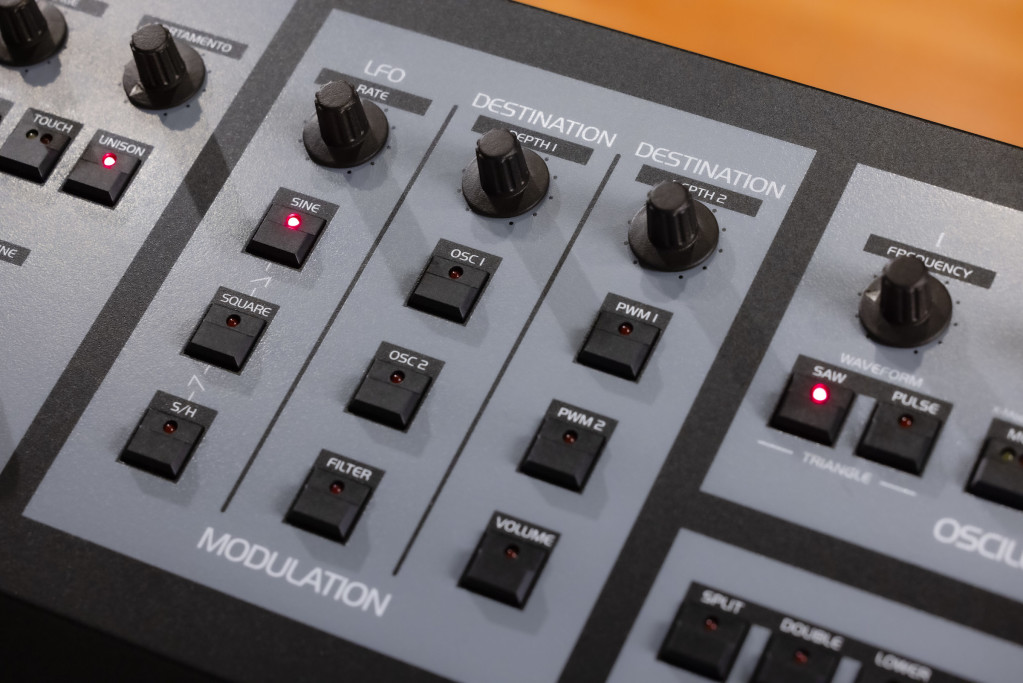
Modulation
In addition to the standard amp and filter envelopes, there are dual LFOs. The front panel LFO is a fairly unusual design for its time, with separate depth knobs that can be assigned to specific destinations. The first knob handles pitch for oscillator 1 and 2, as well as filter cutoff. These are toggled on/off with dedicated switches for each. The second depth knob can be routed to pulse-width for each oscillator and/or volume.
The waveform options cover sine, saw up, saw down, square, and sample-and-hold, but there’s a really cool twist lurking within, as you can assign the source for the sample-and-hold function. If you want the classic “random” sound, keep noise (the default) as the source, but for more clever patterns, you can sample the output of the “Vibrato” LFO which includes a similar set of waveforms. I used this feature on several of my presets, since you can sample the output of a triangle wave to create filter arpeggios (included in the Triplex audio example). It’s just a matter of getting the timing of both LFOs sorted. Tiny changes to either can yield dramatically different results.
It’s a bit exotic by modern standards, but the Vibrato LFO is managed in the paddle section, which includes the arpeggiator as well. The destinations are limited to either or both oscillators, but that makes sense here, since it was used primarily for pitch modulation when these synths were first released. Prince’s “Let’s Go Crazy” organ vibrato is a prime example of this application—and it becomes obvious that the LFO slow-down at the song’s end was done by grabbing the Rate knob in this section.
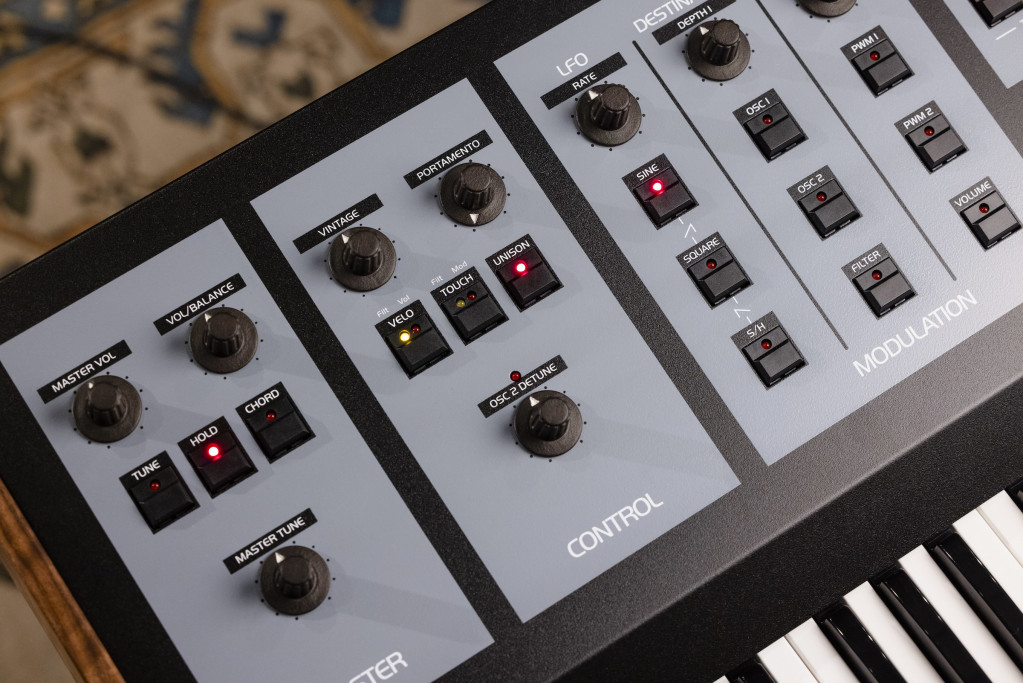
Page 2
Page 2 is another iconic Oberheim inclusion, with every feature from the original OB-8 included, along with an array of modern options. Here you can deeply tweak the details of your sounds, like the individual volumes of oscillators, pulse-width offsets for each, filter modes, voice panning, fine-tuned cross-modulation, and far too many other details to cover in the span of this overview. In deviating from the originals, the inclusion of an OLED for navigation is a godsend and well worth scrolling around and experimenting as you work with the unit. Frankly, I got totally lost a few times (the cross-mod features can wreak havoc with patch tuning if you’re not careful) but it’s well worth the extra effort for accessing features like the aforementioned sample-and-hold tricks.
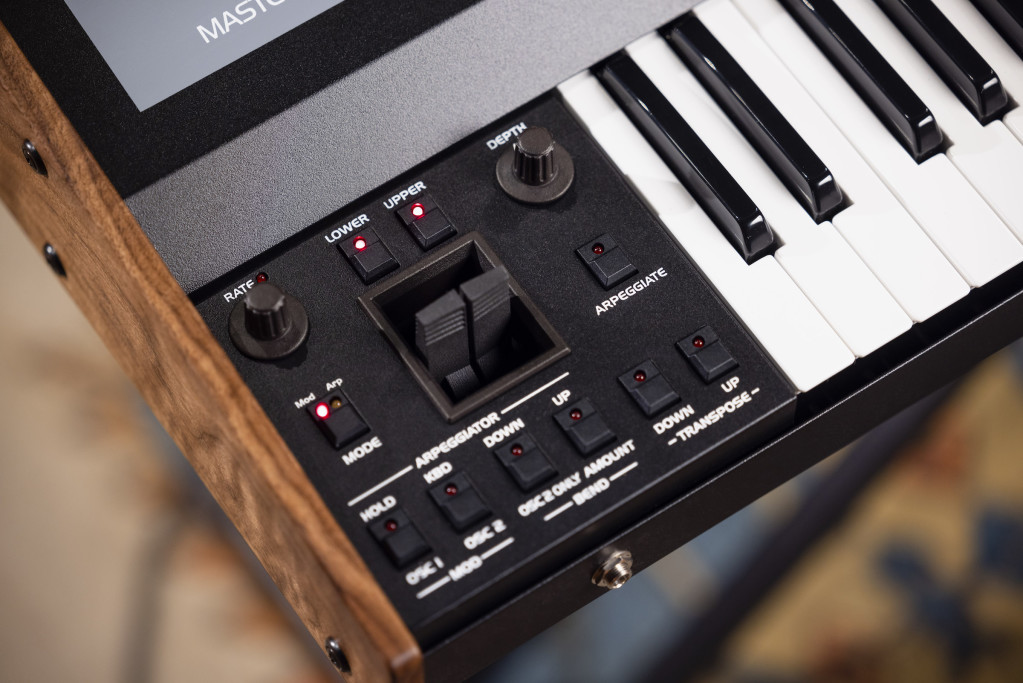
Arpeggiator/Paddles/Performance
The Oberheim approach to arpeggiation requires a quick glance at the manual, as there’s a lot more than the panel indicates. For example, by holding the Mode and Arp buttons simultaneously, you can alter the interval jumps for the arpeggio. On most hardware arpeggiators, we expect standard octave jumps, but once you get the hang of it, you can create interval jumps a la Ableton’s arpeggiator. For several presets, I used fifths, which can be a wonderfully musical alternative to octaves.
The pitch-bend and modulation paddles will confuse some users, since they default to inverted—you pull to pitch-bend up and push to bend down—but this can be changed in the Global settings. Another oddity is the fact that the modulation paddle only works in one direction. By default you can add vibrato by pushing up, but nothing happens when you pull back. New users might think that something’s wrong, but in early days of hardware this was simply a design decision and knowing this, it’s quite easy to get used to.
As for glide, it’s polyphonic, which means you can get all kinds of pitch sweeps in wild directions when it’s set to longer times. Page 2 also lets you select between linear and exponential if you have a preference. That said, Oberheims were among the first (if not the first) mainstream synths to offer quantized glide—meaning that these pitch-sweeps are set in chromatic steps, creating smooth glissandos between notes. I included a subtle version in my “Oh Swell” audio example if you want to hear it in action.
Thanks to Page 2, a pair of unison functions are also customizable, with the ability to select the number of stacked voices and the note priority: Last note, high note or low note, with envelope triggering options for each.
As mentioned previously, part of OB-X8’s massive sound is the inclusion of both split and layered keyboard options. Split keyboards were a common feature in the early 80s, allowing live keyboardists to assign two different sounds to the upper and lower halves of an instrument. What’s cool about this in the modern era is that it allows you to sequence two discrete parts in a studio environment, as well. That said, layering will probably be an even bigger bonus for many users, as it lets you stack two patches for much bigger, more complex sounds—which, in tandem with the OB-X8’s clever voice panning options (yes, it’s stereo) makes this synth sound absolutely massive.
All in all, I had a blast programming the OB-X8 and the attention to sonic detail, authentic feature set, and gargantuan sound truly honors Tom Oberheim legacy of contributions to the history of analog synthesis. Welcome back!

Sound samples, direct from the source
All tracks are 44.1/16-bit .WAV files, recorded direct from the synth on a standard 1/4” cable into my interface. There are no effects, EQ, or dynamics processing (other than fade-outs). This is the raw sound of the unit.
I intentionally created and recorded more exotic sounds, since there will be a deluge of “Jump brass“ and more common rock and synthwave patches from influencers and reviewers. I felt that certain patches would better demonstrate the filtering, layering, and overall character of the synth, which is remarkably distinctive and thick.
Francis Preve – CDM’s in-house synth sound design expert and “wacky neighbor” who pops in – has been busy. Through pandemic lockdowns, he worked on four synths for Korg, 15+ projects for Roland, two Sequential synths, Tonepaper, Ableton Live 11, and Mixed In Key’s new Captain Epic, among other efforts.
And if you enjoyed this tour, check out his in-depth, hands-on sound design insights for CDM: KORG Modwave, Serum and Tonepaper, KORG volca modular, and KORG’s software rendition of the MiniKorg-700.
